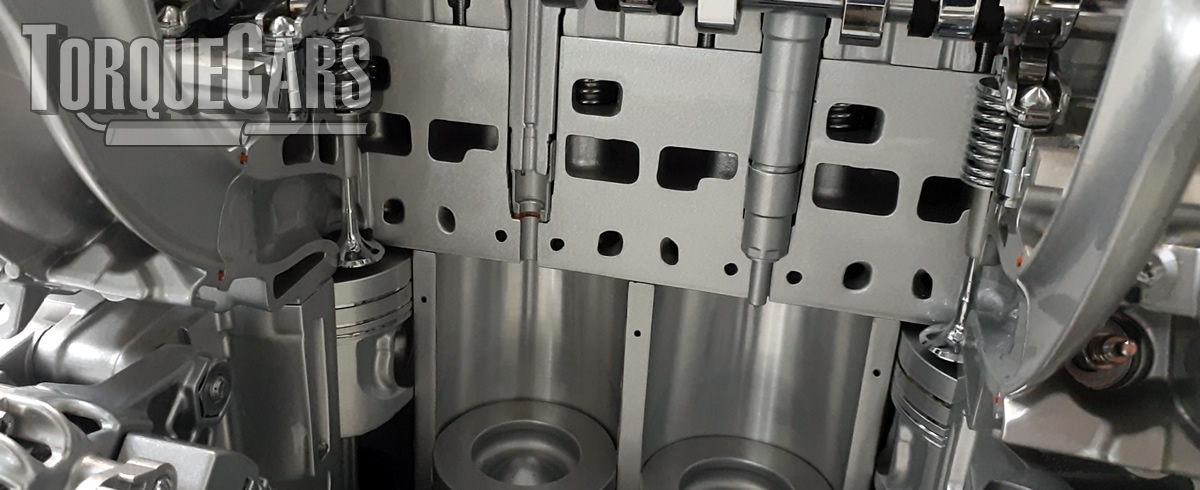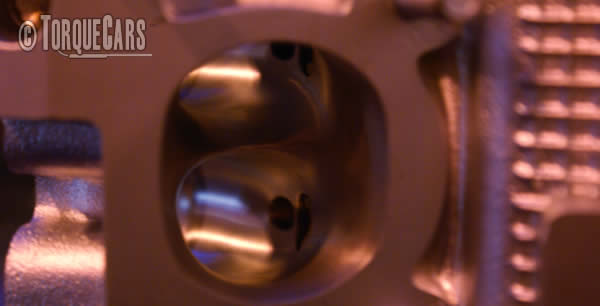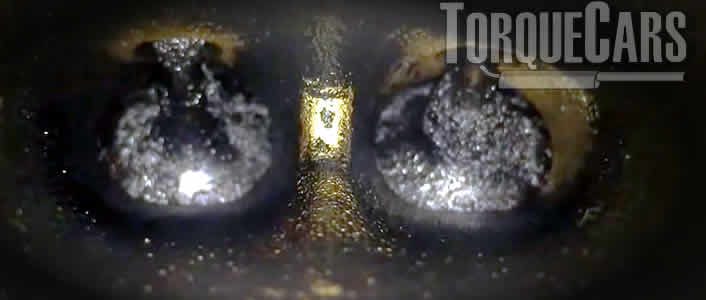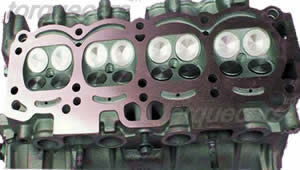Engine carbon build up removal.
"How to clean carbon build up on intakes"
All engines burn fuel and carbon or sooty deposits are a natural occurrence, but over time this can cause problems as the carbon layer builds up.
It will restrict air flow into the engine, can create unsual air flows into the cylinders that prevents proper fuel atomization and mixing and can in some areas cause hot spots to form, adding the risk of detonation.
So let's look at decokes or carbon cleaning and why we need to do this.
It is a particularly bad issue on direct injection engines, and around the intake valves, and should be viewed as a regular item to be addressed as part of your service routine.
Why does this happen on direct injection engines?
It happens when an engine is cold and burning inefficiently or when it is shut off. The oil and particles in the engine are, for reasons of pollution and emissions control dumped into the intake where they are burned in the engine.
These particles attach to the intake valves and without any fuel flowing over them they are left to harden and build up.
Before direct injection the fuel was added as the air met the valves, and this fuel would effectively clean the valves as seen in the image below.

Whereas in the image below, we see a direct injection setup with the fuel going right into the cylinders, and not touching the intake valves or intake area.

VAG group engines and BMW engines seem to be the worst for this problem, and GM and Ford are significantly better.
Large capacity engines are much worse than smaller turbo units.
Newer engines that have direct injection have less of a problem with carbon build up but unless fuel is sprayed on the intake valves the issue is still present.
Why do we use direct injection then if it's such a problem?
It allows an engine to run at a much higher compression ratio, which is good for efficiency and power.
By spraying the fuel into the compressed cylinders air charge at the last minute there is no risk of detonation or premature ignition.
Direct injection fuel systems need to run at a much higher compression ratio.
What about carbon build up in conventional engines?
The carbon deposits will typically coat the cylinder walls and exhaust valves, eventually, you can suffer from hot spots which can cause premature ignition. As the exhaust valves gets clogged up it will impede the flow of the exhaust.
On spark plugs, the carbon build up can act as an insulator and prevent the spark from happening or can weaken the spark or create hot spots.
So on high mileage engines, it's certainly worth doing a carbon clean, also known as a decoke.

Will injector cleaners remove the carbon build up?
In short, no! It is not sprayed into the intake so it will never contact the carbon you want to remove.
HOWEVER it will clean the injectors and internal engine components. This will then allow the engine to run more efficiently and a clean burning efficient engine has less carbon deposits to worry about than a sooty dirty one.
So how to remove carbon build up. Here are the most common methods and we'll discuss these in more detail through this article.
- DIY sprays delivered via the intake
- DIY sprays directly sprayed onto the valve with the intake manifold removed
- Professional chemical spray solutions
- Professional particle spray abrasive
How to clean engine carbon build up.
DIY route
Using a spray cleaner, not a perfect result but this measurably improves the carbon issue and with repeated applications can help remove the carbon.
Generally speaking most DIY spray carbon cleaners will use the following method.
- Open the air intake as close to the manifold as possible and certainly after the turbo and air flow sensor.
- Hold the engine RPM's steady - around 1500-2000 rpms
- Spray the intake carbon cleaner in short bursts
- Shut off the engine and repeat
Bear in mind the spray will need time to penetrate the carbon and do its thing, so don't expect a thorough clean on one treatment.
If a professional did this the process can take a few hours.
Here are some generic notes on DIY carbon cleans.
Cold engines will often divert the intake path along a different route into the cylinder so using the spray when it is cold will help improve cold starting issues or bad running caused by carbon build up.
Do not spray cleaner on the air flow sensor, most products advise you to spray between the air sensor and the engine block.

Spraying into a hot engine will pretty much bypass the carbon build up affecting the cold engine but it will still help.
Allow the mixture to soak into the carbon and eat it away. Most people expect a 10 minute application to work and then take the car on a long drive.
For most products you should spray it in short bursts and lowish RPM, then turn off the engine and leave for at least 1 hour, then reapply and repeat.
After this take the car for a long run to clear out all the crud removed in this process.
Use a DIY spray application every few weeks to get ahead of the carbon build up, and then apply it regularly.
For some this will mean annual applications, for others it may be more or less frequent.

Where to spray the intake cleaner.
The easiest route is usually to remove the air filter and spray into the intake stream, but we note that most products do not recommend spraying on the air flow sensor and in most cars this sits quite a way upstream of the air filter area.
Also if your car has a turbo and intercooler then this spray will go through all those components and may just condense out and sit in the intake pipes and sit there doing not very much at all.
A higher RPM application can help mitigate this risk but ideally, you should spray as near to the engine head as you can.
Removing a line or loosening the air flow housing will help get you nearer to where you want this spray to go.
As each engine is different it is hard to make one recommendation, but follow the directions from the manufacturer and for your specific engine.
A word of caution, if you get too much fluid in the cylinder you will end up causing Hydro lock (hydrostatic lock) which could bend your piston and ruin your engine. So if the engine stalls STOP SPRAYING, this is why we recommend short bursts of cleaner, and doing this over a period of time so it soaks in and gets working.
Professional route - intake clean services
Garages will take off the intake and spray abrasive particles into the engine, these can be plastic, chemical or organic each with their own pros and cons.
We've heard of Walnut blasting where fragments of walnut hit the carbon and shave it off. The Walnut is soft enough to not damage any metal engine components should it find itself inside the cylinders and it will just burn off.
There are also chemical sprays with particles that will physically remove the carbon, completely dissolving it, this is a carefully formulated solution designed to avoid harm to the components of your engine.
There are also professional liquid sprays that go into the intake under carefully controlled pressurized delivery, and this can be very effective at removing carbon.
I had a local garage carry out a BG intake clean and it made a significant difference to my engine's response and power.
Stripping down the engine
The most effective clean you can ever do on an engine is to remove the head and physically clean the intake and valves.
This is very expensive and as the other professional methods are fairly effective you'd be daft to consider this, unless you are planning to upgrade these parts of the engine anyway.
What about sand blasting?
NO, certainly not on a head bolted to an engine, the particles left in the engine will exacerbate wear on all metal components it comes into contact with.
How to Prevent Carbon Build Up
Newer engine designs now spray a little fuel on the intake, usually when an engine is cold, most at need of the cleaning effect and also requiring a richer fuel mix to warm up.
New engine designs also warm up more quickly, and this helps to mitigate the carbon build up issue.
Spraying fuel or methanol at the intake can help clean the valves, but this can cause ignition problems, premature ignition or detonation if not properly controlled and setup.
Oil catch cans have been suggested as effective, but we've not seen any evidence that these help reduce carbon build up.
When a head is removed a complete tear down and clean can be performed, if you are doing this you may as well get the head flowed and ported.
Please Check out my YouTube channel, we're regularly adding new content...
PLEASE HELP: I NEED YOUR DONATIONS TO COVER THE COSTS OF RUNNING THIS SITE AND KEEP IT RUNNING. I do not charge you to access this website and it saves most TorqueCars readers $100's each year - but we are NON PROFIT and not even covering our costs. To keep us running PLEASE Donate here
If you liked this page please share it with your friends, drop a link to it in your favourite forum or use the bookmarking options to save it to your social media profile.
Feedback - What do You Think?
Please use our forums if you wish to ask a tuning question, and please note we do not sell parts or services, we are just an online magazine.
Help us improve, leave a suggestion or tip
Please watch this video and subscribe to my YouTube channel.
5 Responses to “Removing carbon”

 Click to accept YouTube Cookies & Play.
Click to accept YouTube Cookies & Play.
Thanks for adding that sandblasting part at the end. Not the same thing, but I have watched people use an air hose to blow dirt and leaves out of the engine bay with an open valve cover…
Sometimes people hurt my brain
Very good article.
We bought a MITSUBISHI L200 16 valve diesel 2012 with 230,000 miles from a local mechanic. The previous owner had it from new with no major mechanical faults through it life until it just lost power and cut out on the motorway.
The mechanic said the vehicles head gasket had failed. The engine was spinning over very fast when trying to start it. Ive been a mechanic for 35 years and suspected it was something else. So I removed the heater plugs and carried out a compression test. It lost total compression on cylinders 1/2/3. So I removed the cylinder head. We discovered bent intake valves to cylinders 1/2/3. and bad carbon build up around these valves. 3mm of carbon on the face of the valve seats as well as behind the valve heads also 1mm + of carbon build up on the pistons. Piston 4s valves were very clean. It looks like the carbon build up on 1/2/3 intake valves on these cylinders has allowed the piston to impact the valves due to not closing fully. There is no cam shaft or cam follower damage. Timing belts are all good. Its difficult to see any failure of the head gasket there’s no burn or water pressure marks etc but the engine was low on water prior to stripping it. So we believe this vehicle has probably never had a carbon clean and this is a result of that. It will need valve removal, cylinder head pressure test and skim, and port clean, new valves, head gasket set, timing belt kit, as well as the egr valves and systems cleaning. So a fair bit of work and costs.
So I hope this helps people to understand that carbon deposits do build up and if left unattended will cause damage to the engine.
Hey, direct injection and port injection are different things. Your image is port injection (most cars from 1990 – 2010). Direct injection goes straight into the cylinder head like a spark plug. Direct inject is good for stopping carbon build up on the back of valves etc.
Also in another post here you refer to headers as the part that lets air into the engine. Headers are the exhaust…
Thank you for your feedback, the image was there to illustrate the older port injection, but I’ve added one with direct injection for comparison. I’ve also amended the language used around “headers” and “manifolds” on over 1000 pages! as per your observation – thanks for that it’s much appreciated. There are regional variations I’m sure that will still irk some, but together we are getting there. If you spot anything else please let me know.
VERY informative and helpful.
I have learned quite a few things by reading this artical